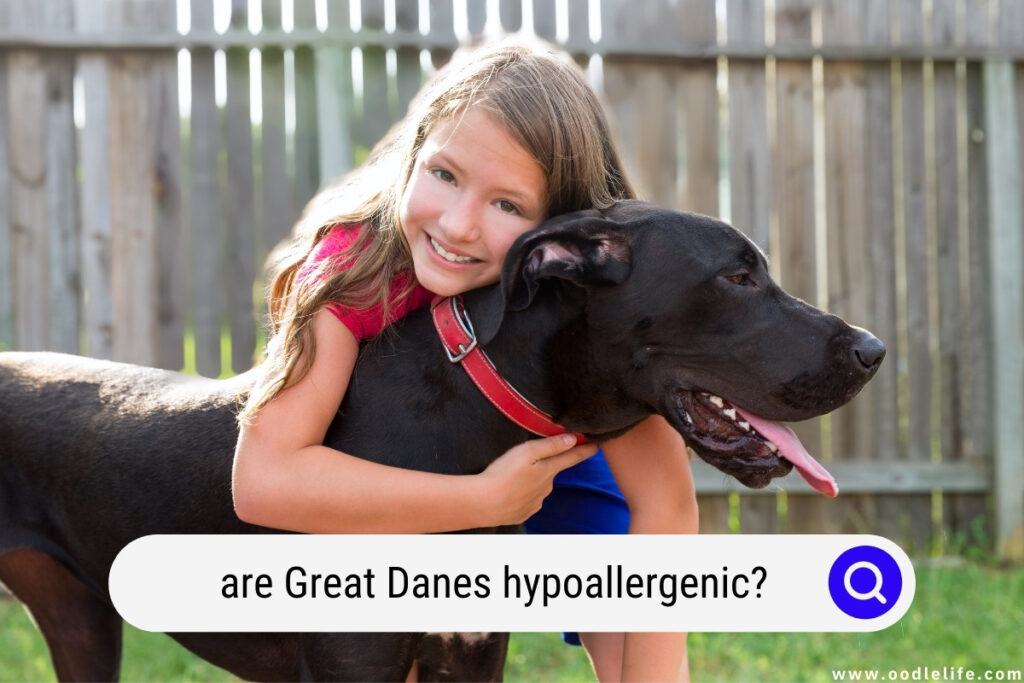Do Great Danes Shed Much? (Stop Shedding Guide)
Massive, regal, and imposing, the Great Dane is one of the largest dog breeds initially bred for their ability to guard and hunt. Historically associated with royalty and the upper-class community in general, today, Great Danes are considered gentle giants despite being descendants of aggressive guard dogs.
All dog owners know that one thing that come with canine companionship is that they will shed. Some dogs shed more, some less, but ALL dogs shed.
Despite their short, single coat, Great Danes are moderate to heavy shedders and will often leave little tufts of fur all over your couch and bed, especially during the shedding seasons of spring and fall.
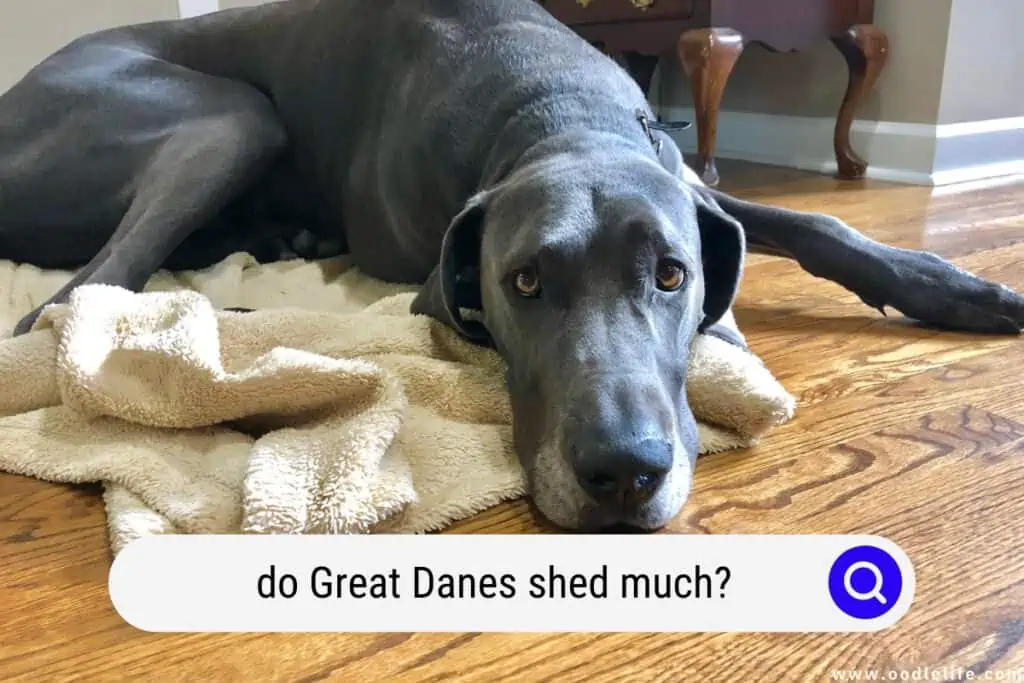
If you’ve wondered how much Great Danes shed and what you can do to keep all that doggy hair off your couch, this blog post is for you. In it, we’ll look at all the things that cause this gentle giant breed to shed, and what you can do about it.
Why Does Shedding Occur?
Shedding is a natural process in all dogs. When a strand of dog fur gets damaged or dies, it falls off the skin, and a new one replaces it, similar to what happens with us humans and our hair. Human beings shed 50 to 100 strands of hair per day, while dogs have significantly more hair than humans!
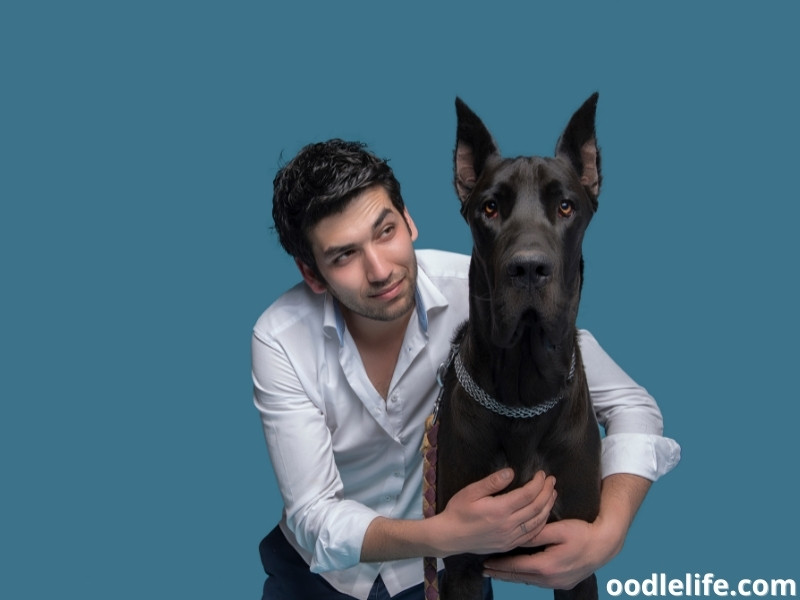
All dogs shed to some extent except for hairless dogs, and some breeds like the Poodle and Maltese are considered hypoallergenic breeds that shed very little. These breeds suit people with allergies well, as they shed so little fur and dander that they are unlikely to trigger an allergic reaction.
A dog’s fur coat goes through a growth cycle to ensure it remains healthy and up to the task. There are four main stages of the natural fur growth cycle in dogs which are:
- The growing (anagen) phase – In this phase, your dog grows new hair follicles.
- The transition (catagen) phase – This comes after the growing phase and it is when the new hair has reached peak length and stops growing.
- The resting (telogen) phase – This is the next phase of the growth cycle and is characterized by a lack of hair growth and lack of shedding. That means that your dog isn’t growing new fur and isn’t shedding any either. This puts the growth rate in a stagnant state.
- The new hair (exogen) phase – In this stage, the old and dead fur falls off as new ones grow to replace them. Most of the shedding occurs in this phase.
The longer a dog takes in the final stage, the more it sheds. The opposite is also true, the longer it stays on the first stage, the less it sheds. Since this is a cyclic process, your dog will have periods when it shed more than others.
How Much Does A Great Dane Shed?
Despite the single, short coat, the Great Dane is considered a moderate to heavy shedder. More often than not, the number of coats a dog has determines the amount of shedding that the dog will do.
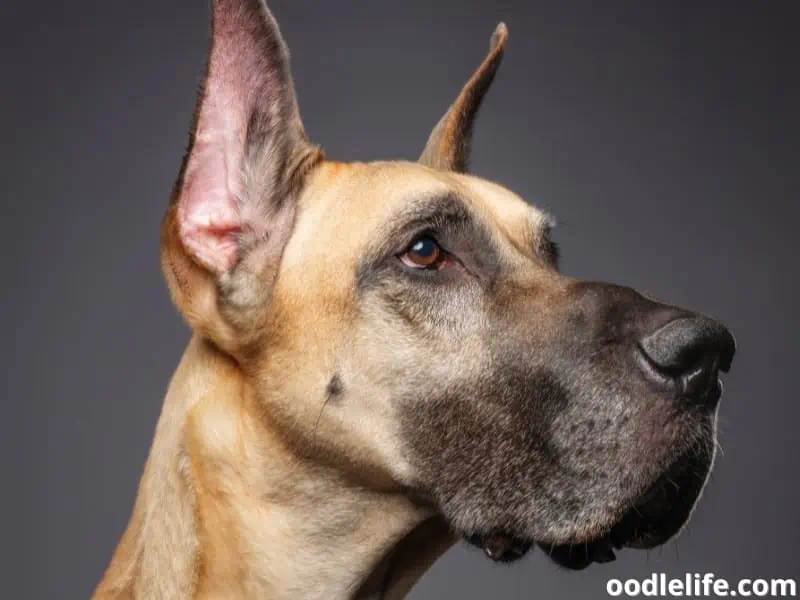
Dogs have either a single coat or a double coat. A single coat means that a dog has only one layer of fur while a double coat means that a dog has two layers of fur; a coarse, protective topcoat or guard hairs, as well as a soft, downy undercoat that insuldates the dog.
Most double-coated dogs like German Shepherds and Siberian Huskies come from cold climates and need protection from the cold. They tend to shed all year round, and more intensely during spring and fall as their undercoat sheds in preparation for the change in season.
Although a Great Dane will have a single, short coat, they are much larger dogs and carry around much more fur!
What Increases Shedding In Great Danes?
Like any individual dog, some Great Danes will shed more than others. While some of it is determined by genetics, there are many other lifestyle and environmental factors that can play a part.
1. Changes in the season
Great Danes shed more during the spring and fall than at other times of the year. There are seasonal changes to the amount of shedding in dogs as they adapt to survive in different temperatures.
In spring, they shed off their winter coats in preparation for warmer months ahead, while in fall, they shed their thinner summer coat to grow a new thicker coat for the winter.
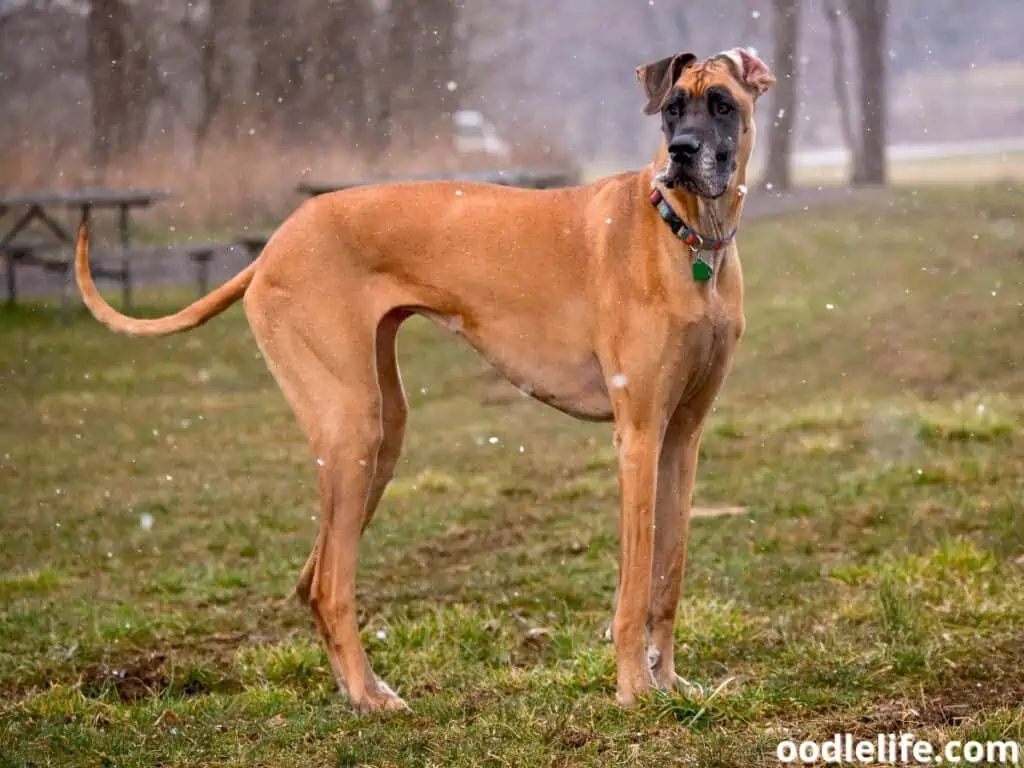
2. Nutrition
As mentioned before, good nutrition is key in preventing excessive shedding. To ensure your dog has all the required nutrients, invest in quality dog food that is specifically meant for large or giant breeds.
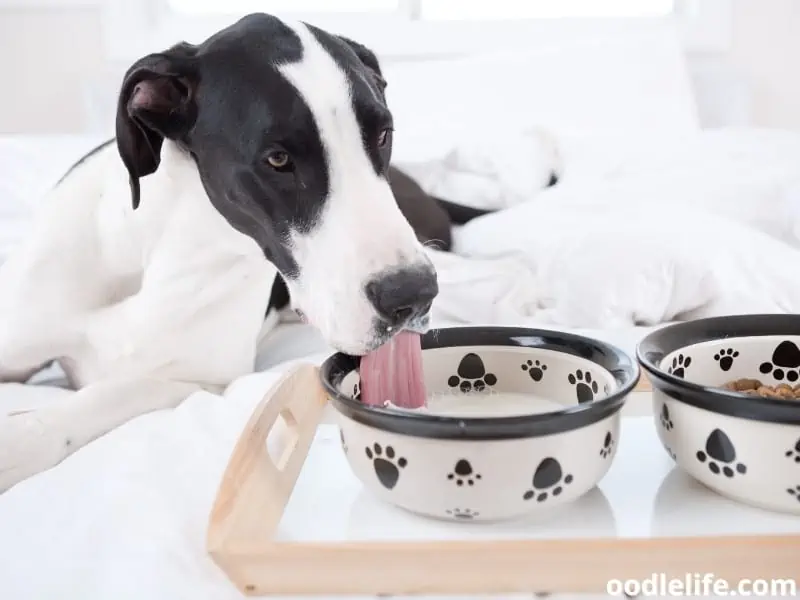
The cheaper a dog food is, the less likely it is to meet your dog’s needs, although of course, this could also mean all the business is doing is having better marketing!
Malnutrition is a major cause of shedding so ensure to feed your dog high-quality dog food to avoid excessive shedding. Check with your veterinarian on what to feed to keep your Great Dane’s nutrition optimal.
3. Health
A healthy Great Dane sheds much less compared to a sick one. If your dog seems to be shedding excessively, you might want to keep an eye on your pooch and make sure it isn’t due to an underlying medical condition.
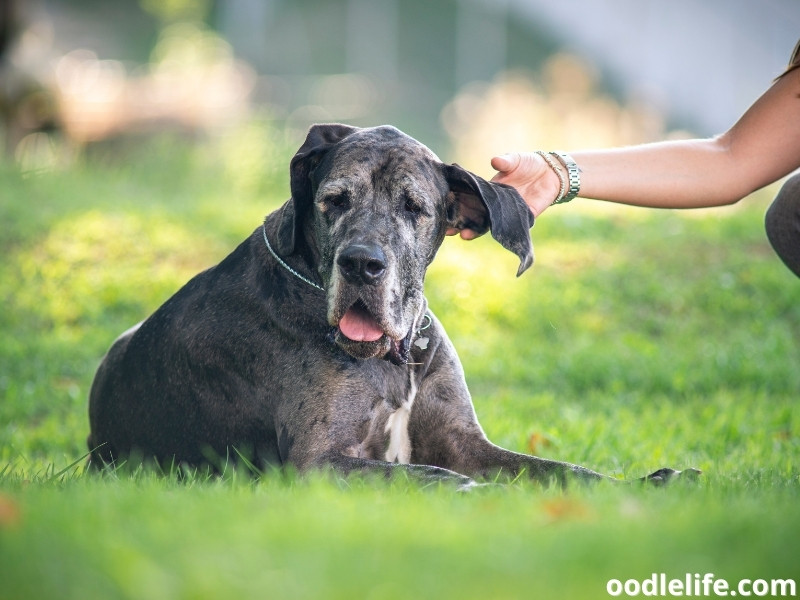
How Can I Minimize Shedding In My Great Dane?
While all dogs shed, there are a few things you can do to save your home all that fur! Here are some tips to ensure your Great Dane sheds as little as possible.
1. Regular grooming
Grooming a Great Dane will require brushing once or twice a week and bathing it every few weeks. Brushing is important for the health of your dog’s fur coat and its skin, promoting blood flow and spreading the natural oils on your dog’s skin evenly.
Combined, these two ensure a healthy coat that is less likely to shed. In addition, brushing removes loose and dead fur. Instead of the loose fur spreading all over your house, you’ll manage to contain the furry mess and simply clean one spot.
Great Danes have short single coats and you can use a slicker brush with short bristles or a curry comb designed for dogs with short coats. De-shedding tools are also a good option.
2. Proper brushing technique
Do not use too much pressure when brushing your dog because this will irritate its skin, and brush your dog in an easy-to-clean, well-aerated area. It would not make sense to brush your Great Dane on your living room carpet and have to vacuum it thoroughly after, so maybe move outdoors and let those tufts of fur simply blow away.
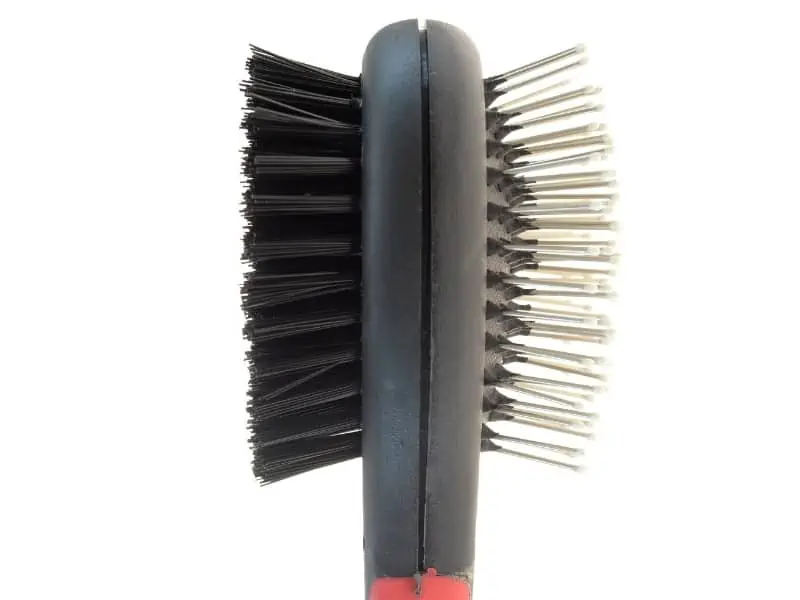
3. Give your Great Dane a bath
Great Danes are clean dogs that don’t require much bathing. Frequently baths might strip the coat of natural oils and dry out the skin. Every few weeks or whenever needed would be fine.
Be sure to use dog shampoo (not human shampoo) and set aside enough time to bathe your dog.
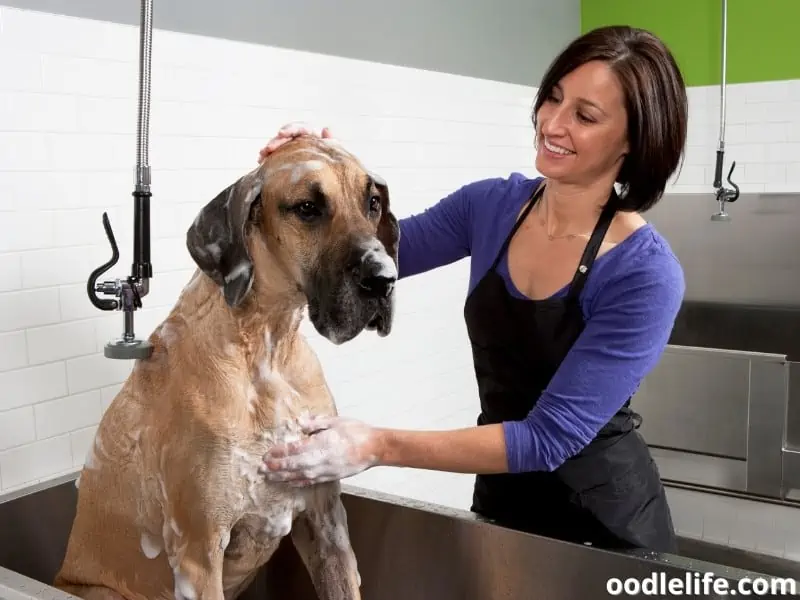
4. Good nutrition
A healthy diet is important for all animals, including dogs. Just like humans, what a dog eats can affect their energy levels, mood, and overall health.
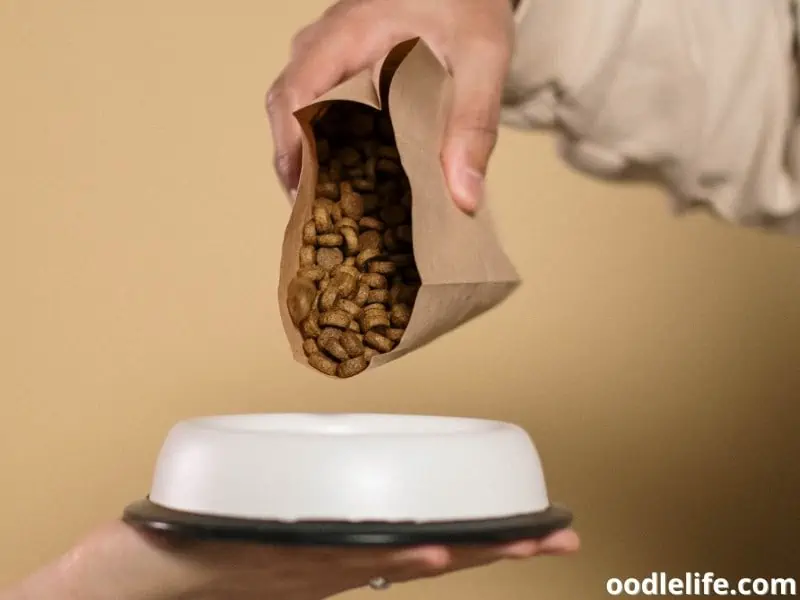
For example, a diet lacking in certain nutrients can cause a dog to shed excessively. If a dog isn’t getting enough protein, essential fatty acids, or vitamins A and E, they may start to lose fur.
In some cases, a poor diet can even lead to hair loss. While there are many factors that contribute to shedding, nutrition is an important one to consider. By ensuring that your dog is eating a balanced diet, you can help them maintain a healthy coat of fur.
How Do I Keep My Home Clean?
Despite all your efforts, your Great Dane WILL shed – all dogs do! Here are a few things you can do to keep your home as fur-free as possible.
1. Vacuum regularly
You’ll need a good vacuum that can pick up dog fur efficiently.

2. Get the appropriate upholstery
Leather picks up less fur while fabric couches tend to be fur magnets. You can also use removable coverings that are machine washable for easier cleaning.
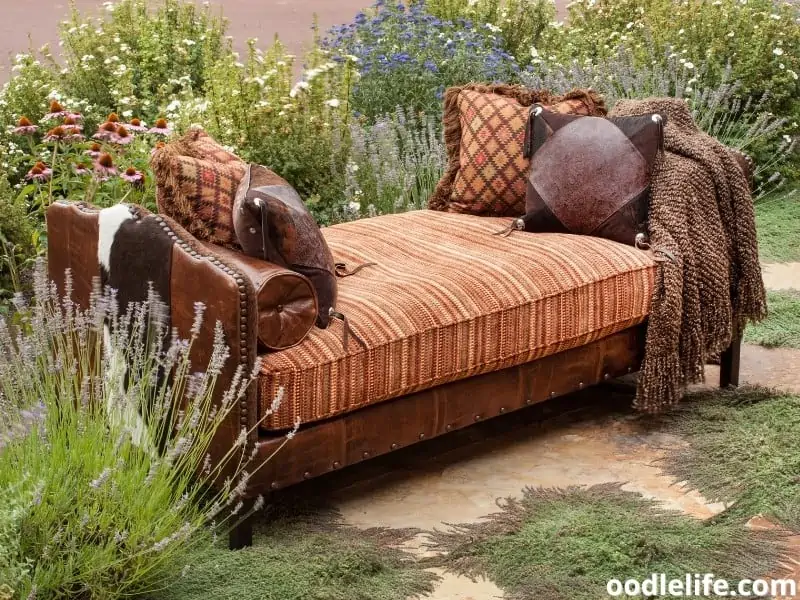
3. Appropriate colors
If you have a Great Dane that is dark or tan, you might want to use those colors in your home. In addition, hardwood floors and tiles are the most recommended because you can get one in a color that blends with your dog.
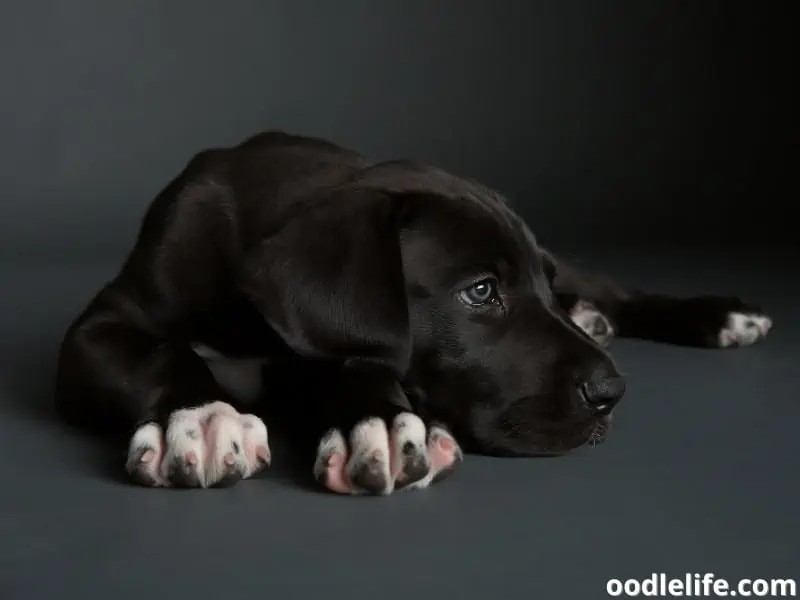
Final Thoughts
Many dog owners believe that brushing their pet is a tedious and time-consuming task. However, regular brushing can actually be beneficial for both dogs and their owners.
For example, brushed dogs tend to shed less, which can keep your home cleaner and reduce the amount of time you spend vacuuming.
In addition, brushing helps to distribute natural oils throughout the coat, which can keep the skin healthy and the coat looking shiny and sleek. And, of course, spending time brushing your dog is a great way to bond with your furry friend. So next time you reach for the vacuum cleaner, consider taking a few minutes to brush your dog instead.
You may be surprised at how much you enjoy it!
